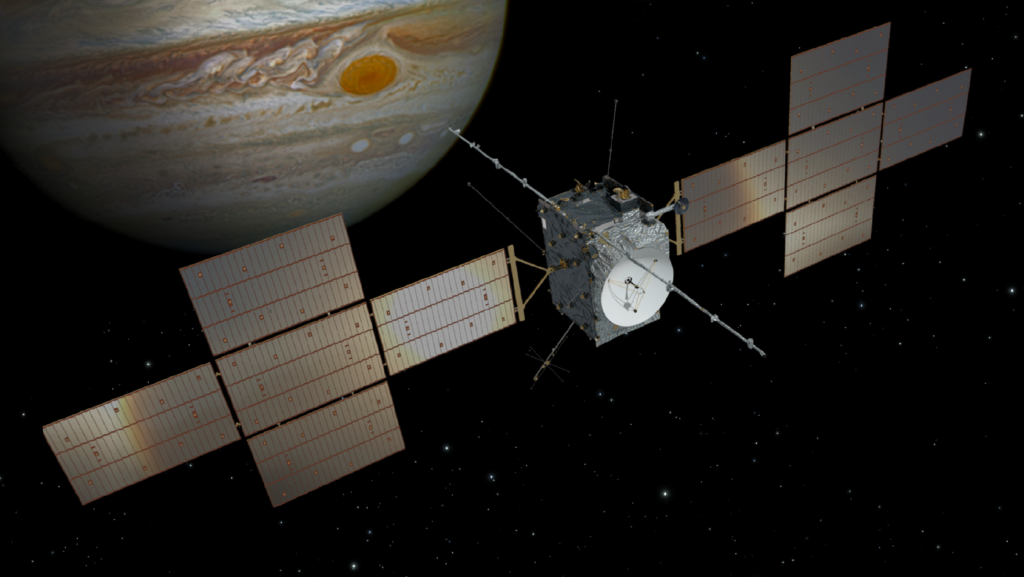
The European Space Agency’s (ESA) Jupiter Icy Moon Explorer (JUICE) spacecraft has set off for Jupiter and its satellites, carrying important instruments developed by Italy under the leadership of the Italian Space Agency (ASI). The successful lunch took place from Europe’s spaceport in Kourou, French Guiana, on 14 April 2023.
The probe will take approximately eight years to reach the orbit of the gas giant. It will make a series of flybys of the three moons while orbiting Jupiter in order to perform a complex set of tasks over three years: from the observation of the planet’s atmosphere and magnetosphere to the study of its moons – Ganymede, Europa and Callisto, which are thought to hold vast oceans of water beneath their icy surfaces – to investigate their potential habitability. JUICE will also analyse the conditions for planet formation and how the Solar System works.
Three of the ten instruments on board were developed under the leadership of the Italian Space Agency, in collaboration with the national scientific community and industry. The three Italian-led instruments are:
- Radar for Icy Moon Exploration (RIME), a radar sounder optimized for the penetration of the Galilean icy moons up to a depth of 9 km, with a vertical resolution of up to 30 m;
- Jovis, Amorum ac Natorum Undique Scrutator (JANUS), an optical camera system that will study global, regional and local features and processes on the planet’s moons and map the clouds of Jupiter;
- Gravity and Geophysics of Jupiter and the Galilean Moons (3GM), a radio science experiment developed in collaboration with the Israel Space Agency that will study the gravity field up to the tenth harmonic at Ganymede and the extent of the internal oceans on the icy moons.
Italy also contributed to the MAJIS spectrometer that was built under the leadership of France on the basis of a bilateral agreement between ASI and the French space agency CNES.
The development of the four instruments significantly involved Italian institutions and universities such as the National Institute for Astrophysics (INAF), University of Trento, Sapienza University of Rome, University of Roma Tre, Bruno Kessler Foundation (FBK), University of Bologna, Tor Vergata University of Rome, National Research Council (CNR), University of Padua, Polytechnic University of Milan, University of Salento. The Italian industrial sector also made a significant contribution to the mission through Thales Alenia Space and Leonardo.
“We are playing a leading role also in this mission and the ASI has, as always, played the role of catalyst for the scientific and industrial expertise and skills that our space sector can offer at the international level. Italy’s contribution is close to 50% of the entire programme through the instruments we have on board, which are also the result of international collaborations with other European agencies, the Israeli agency and NASA’s JPL,” emphasized ASI president Giorgio Saccoccia.
“INAF makes a fundamental contribution on board the mission with leadership in several science instruments, such as MAJIS and JANUS, and a first-rate team of researchers. We are also proud that JUICE will fly to the gas giant carrying a commemorative plaque dedicated to Galileo Galilei and his Sidereus Nuncius, the book that describes the first incredible observations of Jupiter and its satellites made through a telescope,” concluded Marco Tavani, president of the National Institute for Astrophysics.

